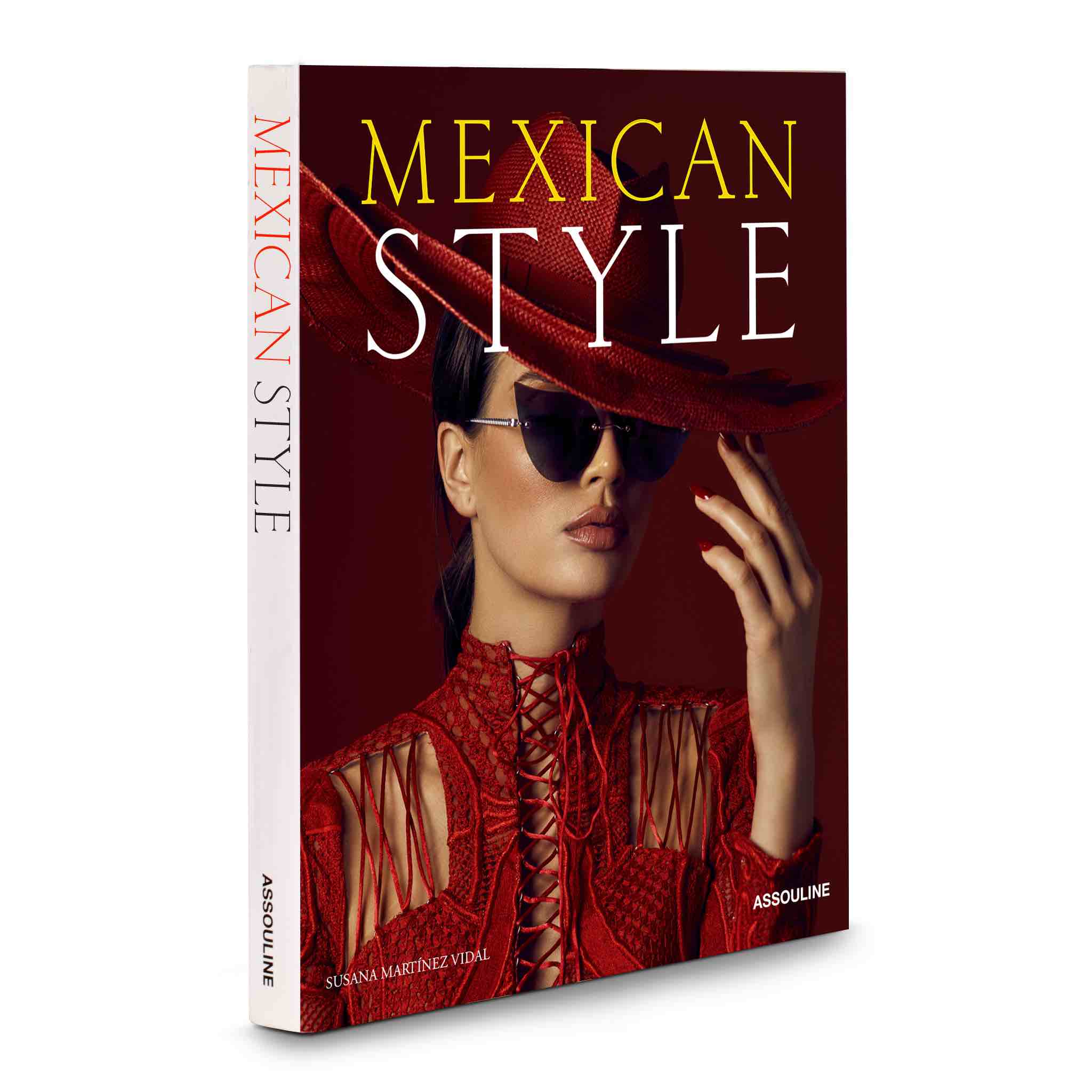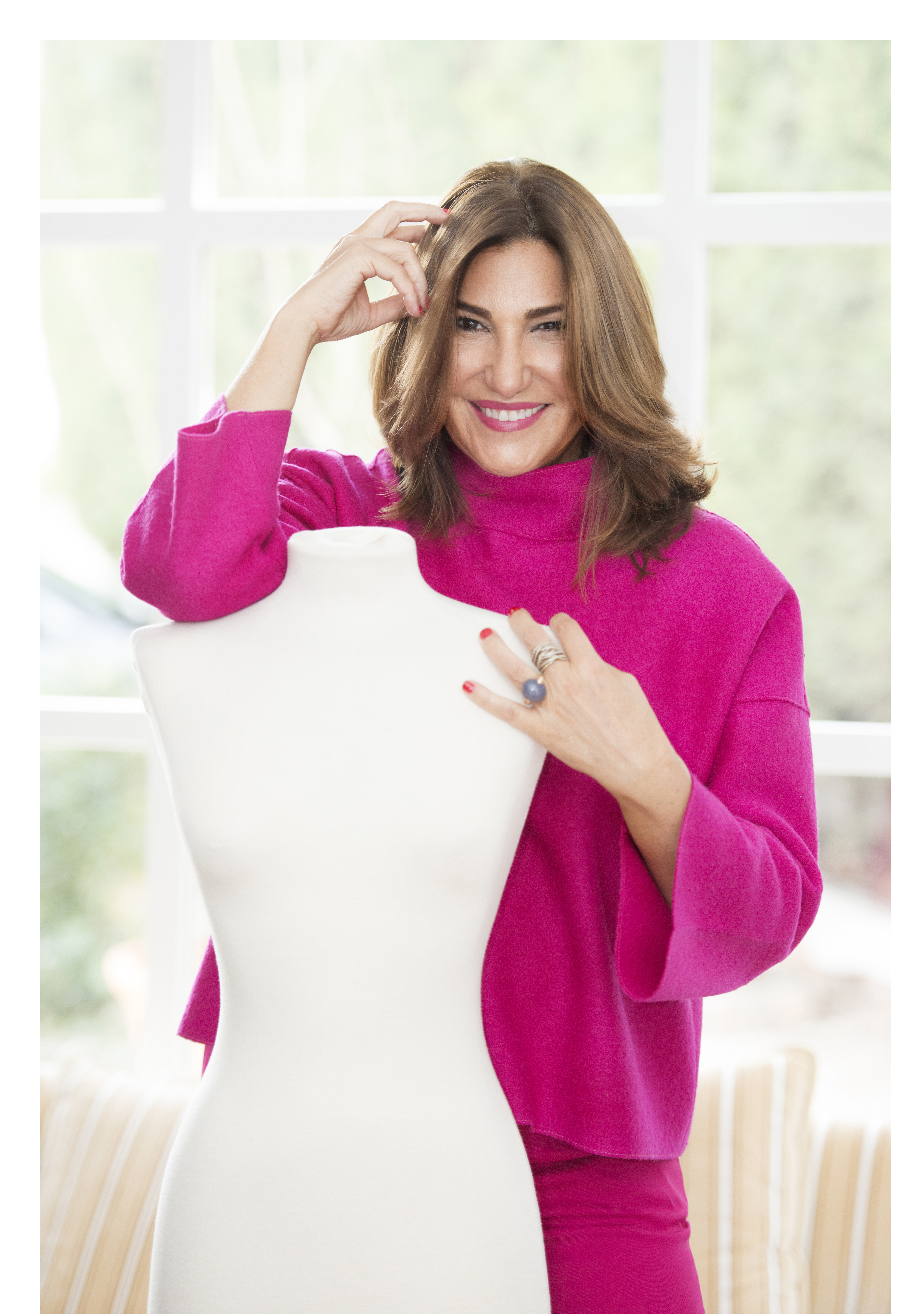As someone who enjoys to host, I was in search of my next statement book, in need of an icebreaker in the frozen city of Washington DC, I began my search for a conversation starter in Assouline Style Series. I came upon Susana Martínez Vidal’s ‘Mexican Style’ completely mesmerized by the mysterious eye-catching cover. An olive skinned woman, covered in a large hat, dark sunglasses, with a Spanish red woven leather uniform. Mysterious. A flash of history. I could tell the book was more than fashion, it was a story. In ‘Mexican Style,’ Vidal’s words and phrasing are poetry, and gives the reader a multi-dimensional experience, a visceral engagement. I experienced Mexico. As I turned the pages, I understood the greatness of Assouline, ‘Mexican Style’, but moreover, the eye of Vidal in that one’s outward appearance is a reflection inwards of ones way, history, cultural manners; their ‘Style’.
Assouline has been in print since 1994, a creative quarter-century. Assouline, known for their vivid images that say 1,000 words is a luxury book publishing company found in Paris boutiques to the New York Plaza Hotel. Their collection is inspired by life around us, attentive to the historic or modern narrative behind the images in their photo books; having the ability to inform and transport the reader.
Vidal was born in Madrid and has lived in Mexico City since 2010. She served as Director of ELLE España for nearly 20 years and is a published author. It is evident that her experience helped carve a beautiful book visually and culturally. It is truly incredible that through fashion, through symbols and patterns one is able to pay homage to culture and history. Upon finishing the book, all I could think, is what a great diplomatic tool, a beautiful vehicle to build a bridge to Mexico, an often under-appreciated country in mainstream media.
Being multi-ethnic myself, I cannot help but to draw a connection between how our style is a reflection of our culture. For example, I am drawn to Oudh, a wood scent that matches a warm Arab environment and a scent that hails curiosity, naturally I am uncomfortable in form fitting clothing tracing back to modest traditions in our religion, and I adore to compliment my Ralph Lauren button down blouse with a gold pearl sword brooch. The search for the perfect oilve branch accessory. It is no secret symbols and patterns of our past live in our identity today. A way that is softly communicated, in our style, in our manner. It is evident, for those who choose, that fashion is an expression of their history and identity. I can think of names of extraordinary men and women, who incorporate their history in their forward appearance. It is in that representation we find a powerful way to accustom the eyes around us to see the beauty of “the other,” the soul of us.
It is evident, for those who choose, that fashion is an expression of their history and identity.
Sarah Elzeini
Vidal with such grand birds-eye view of the interworking of fashion and culture globally, and who is an intellect as well on the aura of Frida Kahlo – from her ability to spread her culture through her style internationally – would provide most insightful perspective on the understudied topic of fashion, culture, and diplomacy. I spoke with Vidal on her take on questions central to the diplomacy of style:
1. How has your job as Director of ELLE Spain impacted the way you see the world?
SMV: I have an eye cultivated in search of beauty, not perfection. Working in the fashion and beauty industry for so long has made me react to the superfluous and banal, and focus more on what is unique and perfectly imperfect.
2. Is the depiction of ‘the other’ whether in fashion or art an exoticization that should be forbidden or encouraged? Why do you think there is such a controversy of utilizing another’s culture in fashion?
SMV: The representation of the “other” in fashion or art is a way to show admiration and pay tribute to a relevant personality, so long as the image is not trivialized or used for other purposes that have nothing to do with the qualities attributed to it. So, I always wish to make it clear that my portrayal, for example in my Frida Kahlo works, were not Fridomania but Fridopassion.
Controversy exists when you appropriate the cultural identity of a people without citing its origin and deprive it of its meaning.
Susana Martínez Vidal
3. You have written on Frida Kahlo – the famous and treasured – Mexican artist. What inspired you to create ‘Mexican Style’ a look at Mexican life at large. What was your vision for the book?
SMV: I was always struck by how fashion, which by definition lives off change, has been obsessed with Frida Kahlo for decades. Why it still seems so modern to us in the 21st century.
And like Frida despite being a woman, disabled, half indigenous and belonging to an emerging country and not being part of the show business world (as she was not an actress, nor a singer, nor a dancer) how she slipped into the list of the most iconic women of the 20th century, along with Jackie Kennedy or María Callas.
During the almost 18 years that I was in charge of ELLE Spain and attended international catwalks, I saw Frida parade on countless occasions interpreted, in a diverse way. The best designers in the world: Jean Paul Gaultier, Givenchy, Valentino, Karl Lagerfeld, Lacroix, Kenzo, honored her. There were countless times that I witnessed her influence on music, movies and in the most coveted international fashion magazines. The most famous actresses, models and singers have paid tribute to her: Mónica Bellucci, Naomi Campbell, Linda Evangelista, Kate Most, Claudia Schiffer, Beyoncé, Madonna, Patti Smith, Coldplay.
In 2013, shortly after moving to live in Mexico, the Huffington Post asked me to blog about the newly opened exhibition of Frida Kahlo’s dresses. Seeing this fantastic exhibition at the Casa Azul Museum in Mexico City, I began to remember all those images of Frida from the catwalks and decided that Frida in Fashion deserved to be addressed in depth. At the end of the article I expressed my wish that one day a book would tell the extent of Frida Kahlo’s influence on fashion. It was a challenge that I launched myself to dare set foot in. The article, for months, was one of the most read, and this convinced me that Frida lived despite having been dead for more than half a century. My book “Frida Kahlo: Fashion as the Art of Being,” is the realization of that dream.
Loving Frida is loving Mexico. So after writing two books on the painter, it was inevitable to delve into her Mexican essence. This is how “Mexican Style” was born.
4. How have you been able to use your publications as a diplomatic tool. I saw your book was presented to the pope.
SMV: A friend had an audience with the Pope and decided to give him the book among others, but I have to tell you that this book has reminded the world of the extraordinary positive side of Mexico. The formula of art and history interwoven in a book, is a great diplomatic tool to improve the country’s brand image.
“Mexican Style” is a 360 degree exploration of this mythical and colorful country. A breath of air that clears the clouds that sometimes hide the country’s unique identity for outsiders, and each page in this exceptional addition to the Assouline Style series revealed the color and brilliance of a nation that fascinates the world. The Mexican style is an aesthetic, chaotic, surprising and a charming journey that helps us understand the memory, the collective history and the heart of this land.
5. What is the role of history in fashion?
SMV: The sublime and truthful capacity to reflect the air of the times. Fashion is a tool for self-expression and an aesthetic form that transmits a message of identity beyond what is apparent. You dress according to the way you feel and also according to the way you want to be perceived.
Fashion is always a declaration of principles.
Susana Martínez Vidal
6. There are reoccurring themes of feminism in your book from Frida Kahlo to the Adelitas. Actually, often many do not realize how feminine Frida Kahlo was due to her exterior appearance first glance. How do you define feminism?
SMV: Today we have finally understood that femininity and feminism are not only compatible but they are mutually reinforcing. And that was a message that Frida Kahlo championed in Mexico and around the world.
7. How has fashion made the world a better place?
SMV: Enhancing individuality and diversity. Fashion has the ultimate goal of making you unique, and contrary to popular belief, making you look more you. As filmmaker Alejandro Jodorowsky said: “Go where they respect your soul, not where they respect your costume.”
Fashion must be decoupled from status and social class. It does not depend on what you wear, rather how you wear it. As an example, Frida Kahlo, like fashion, represents diversity in itself. There are many Fridas because she plays a lot of roles: muse, loving wife, feminist heroine, frustrated mother, political activist, martyr, devout, communist adulteress, declared atheist, and universal artist. There is always a Frida that touches your heart. She embodied the spirit that eternally rebels against conventionalism. And provocation is one of the most recurrent languages in fashion.
Fashion is the art of being … not the effort to appear.
Susana Martínez Vidal
No one exists in an idea lab producing fashion hits. Beauty hits perhaps, but fashion goes beyond research and marketing. What makes it fascinating and addictive is its unpredictable capacity for surprise. It is uncontrollable to know that you will be successful.
If I had to give a formula on how trends originate, I would say that something essential is the convergence of aesthetic culture, historical perspective and social reality. Fashion has not stopped looking to the past to predict the future.
I would like for my audience after reading my other books “Frida Kahlo: Fashion as the Art of Being” and the “Frida Effect,” to learn of her identity, her environment’s history, and how it made her art.
I want the reader to have a multi-faceted view of fashion, and to bring the concept of fashion to one of the most beautiful, unknown and least valued sides; the intellectual, artistic and sociological dimension beyond vain and consumerist appearances.
Susana Martínez Vidal
8. Are you working on any current or future projects you can speak on?
SMV: A 21st century documentary of Frida Kahlo’s legacy.
The documentary will show an unexplored vision of Frida Kahlo. In it, I explain why Frida is more alive today than before she died. I will have the privilege of being accompanied by two great professionals of recognized experience that at the moment I cannot reveal.



